Thanks to their richness in antioxidants and other nutrients or their ability to regenerate the intestinal microbiota, these foods strengthen the immune system in a simple and effective way.
In addition to taking care of our environment and our planet in order to preserve and maintain our health, we have other tools at hand to pamper our immune system with the intention of preventing infections, diseases and maintaining our health. One of the fundamentals is food.
On the one hand we have essential nutrients for the immune system, such as vitamins C or D, omega-3 fatty acids or the minerals zinc and selenium, among others. Including in our daily diet foods that raise the defenses, rich in these nutrients, will allow us to be better prepared to prevent and overcome infections.
On the other hand, it must be taken into account that a good part of the immune system depends on the health and integrity of the digestive system, so when thinking about eating well to maintain high defenses it is important to also think about taking care of this entire system. A diet rich in fiber and probiotic foods will be one of the keys.
FOODS TO BOOST THE IMMUNE SYSTEM
Some plant foods are especially concentrated in some of these nutrients or contribute their richness in prebiotic fiber or probiotic bacteria to the optimal functioning of the digestive system. Include them in your recipes regularly so that they are part of your daily diet. These are the 30 most prominent for their immu nostimulating properties:
Garlic
The garlic is one of the super foods that nature gives us with antiviral, antifungal and antibacterial properties, largely thanks to its content of alliin.
In addition to colds and flu, it helps fight urinary infections, ear infections, and intestinal parasites. In the former, it not only helps by stimulating the functioning of the immune system, but also helps to dilate the bronchi and thin the mucous membranes.
As if that were not enough, it provides a type of fiber, oligosaccharides, which feeds the beneficial intestinal microbiota.
Ginger
The ginger (Zingier officinale) is ideal for taking in teas, soups, creams, smoothies, sauces, etc. It provides a spicy flavor and favors the maintenance of internal heat by expelling the cold, which makes it a useful remedy for colds and flu.
It is also very digestive, improves the composition of the intestinal microbiota favoring the elimination of harmful bacteria and helps prevent abdominal bloating and gas.
Kale
Kale, belonging to the cruciferous family, is one of the most nutritious foods due to its richness in minerals and vitamins. It is very rich in provitamin A and magnesium.
If you don’t know how to use it, you can follow these tips to get the most out of it or try any of these handy recipes with kale.
Leek
The leek belongs to the family of garlic and onions, which shares with them its richness in sulfur compounds with antiviral and antiseptic properties. But it is also the richest in prebiotic fiber, which feeds the bacteria in the colon.
Kefir
The kefir can be water, goat milk or vegetable milk such as coconut. It is a fermented food, so it provides bacteria that reinforce the function of the intestine as a defensive barrier.
Berries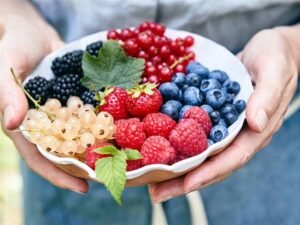
Thanks to its richness in antioxidants and fiber, red fruits prevent inflammation and improve the state of
intestinal bacteria.
Daikon radish
Its slightly spicy flavor, its richness in fiber and its water content make it an ally of immunity. It also provides digestive enzymes that promote the digestion of foods rich in starch.
Like other white foods, it is considered beneficial for the lungs according to traditional Chinese medicine.
Thyme
Of the thyme you can use your essential oil or made infusions to treat coughs and stimulate defenses. It has antiviral, expectorant and tonic properties. It also facilitates digestion.
Shiitake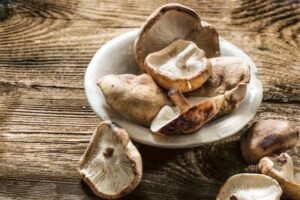
The richness in beta – glucans of these oriental mushrooms makes them essential to strengthen the immune system. Consume them often sautéed, in creams or pates or add them to your soups.
Kuzu
This dried root originating in the East softens the mucous membranes and is a source of fiber for the beneficial bacteria in the intestine. You can take it dissolved in water or use it as a thickener.
In another article we tell you what kuzu is, how to take it and why it is good for respiratory conditions.
Kiwi, orange and lemon
They are the three most fruits known for their extraordinary richness in vitamin C. The first two can be eaten whole to take full advantage of its fiber and antioxidants.
With the lemon, make juice and add it to a ginger infusion.
Pumpkin seeds
These tasty seeds are rich in zinc, an essential mineral for the maintenance and functioning of the immune system.
Cauliflower
According to traditional Chinese medicine, cauliflower is one of the best vegetables for toning the lungs, skin, and large intestine. In addition, like other cabbages, it gives you sulfur compounds such as sulforaphane, with antioxidant properties.
Pumpkin
In addition to providing the antioxidant beta-carotene, which is transformed into vitamin A, it is rich in fiber, which feeds the microbiota.
Extra virgin olive oil
The olive oil is not only a healthy fat, but provides vitamin E and antioxidant polyphenols. It also helps you better assimilate the antioxidants from other foods.
Add it raw to the dishes so that it does not lose its best properties.
Onion
The richness in quercetin (an antioxidant) and in alicystein of the onion helps to eliminate mucus. These substances are preserved even when the onion is cooked.
Apart from including it in your salads, stews and stir-fries, you can prepare a natural syrup against the flu with it.
Grenade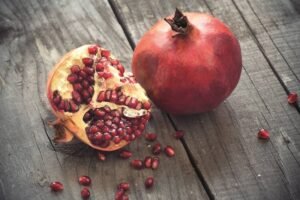
The Granada is one of the most antioxidant – rich fruits. Consume them during their short season (September to November) daily, adding their grains to yogurts and salads or taking it in juice.
Kombucha
Kombucha is a fermented drink that provides a wide variety of bacteria and yeasts that enrich the intestinal microbiota. It also supports liver function, among other valuable properties.
Sweet potato
The orange color of the sweet potato indicates the presence of beta-carotene. This antioxidant pigment is a precursor of vitamin A, which strengthens immunity and keeps mucous membranes in good condition.
Raw honey
The antibiotic properties of honey are lost if it is subjected to intense heat. It is very useful for relieving coughs and sore throats.
Turmeric
Turmeric (Curcuma longa) is the most studied culinary plant and spice for its anti-inflammatory properties. Consume it lightly cooked, combined with some fat and freshly ground black pepper.
Chia seeds and flax
Both chia and flax seeds stand out for their richness in omega-3 fats. They also release mucilages when hydrated, thereby improving the state of the intestine.
Red pepper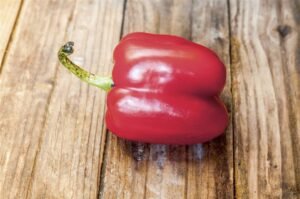
The red pepper stands out for being very rich in vitamin C: it contributes even more than orange or kiwi, as long as we consume it raw. In addition, it is rich in beta-carotene.
Applesauce
The apple benefits you whether you eat it raw or cook it. When you take it raw, it provides you with abundant vitamin C. But when you cook the fruit with a little water, its soluble fiber mixes with the water and favors the cleansing of the intestine.
Sauerkraut
Fermented cabbage is a probiotic food rich in vitamin C that helps digestion and enriches the microbiota.
Mushrooms
Mushrooms are rich in selenium and if they are left in the sun for a few hours they can synthesize vitamin D2. In addition, like shiitake mushrooms, they provide abundant beta-glucans, a type of fiber with immu nostimulating properties.
Chilled potato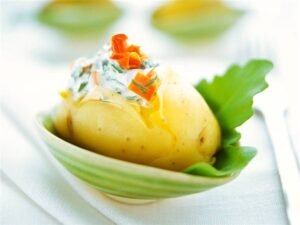
When the cooked potato is cooled, part of the starch becomes resistant to digestion and behaves like a fiber that serves as food for the microbiota.
Resistant starch is formed specifically by allowing foods such as potatoes, rice or pasta to cool for a day.
Arugula
This cruciferous is rich in sulforaphane, calcium and magnesium. Its bitter taste comes from compounds that promote digestion.
Cochayuyo seaweed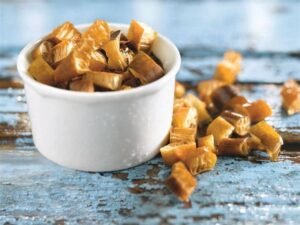
Due to its richness in cysteine, this algae improves the ability to expel mucus. It is also a good source of soluble fiber and minerals.
Seawater
Sea water, properly filtered, contributes to hydration but is also very rich in trace elements that participate in immune processes. Mix it with some natural mineral water. You will find it in herbal diets.
